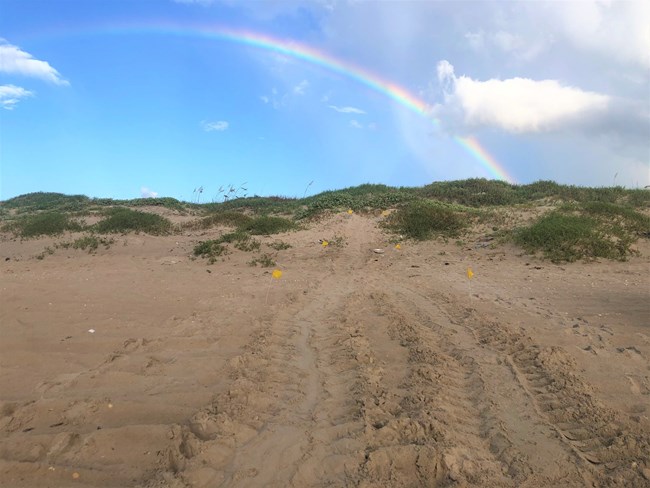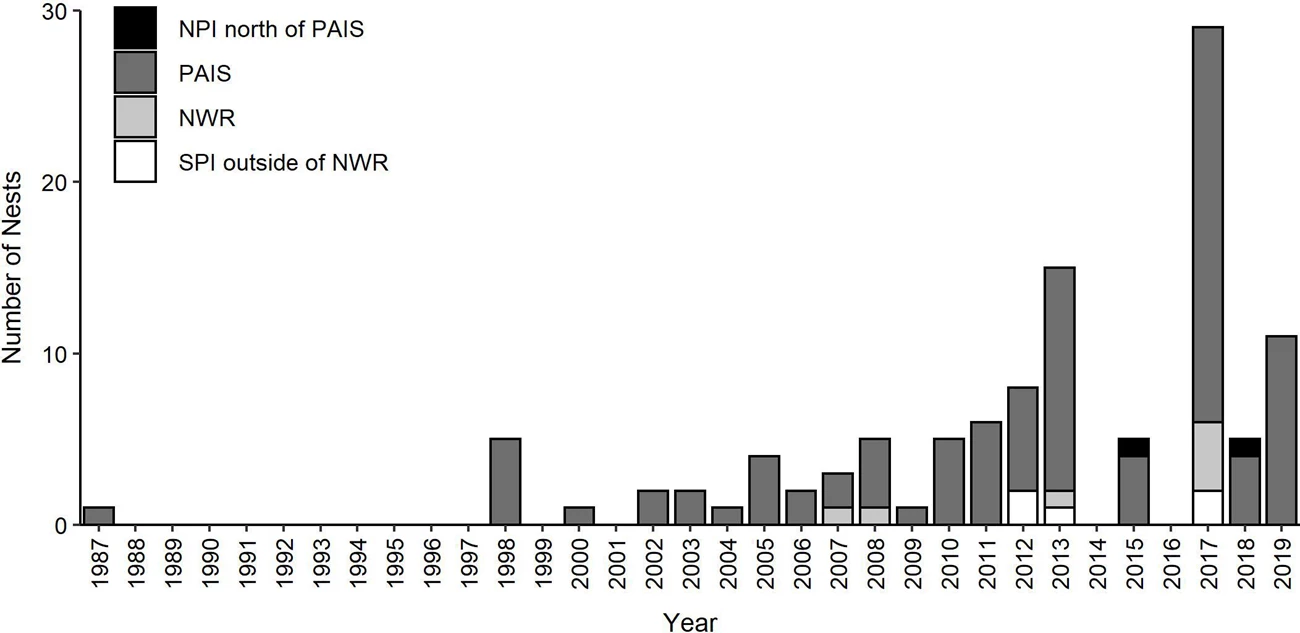
NPS photo. Park staff with the Sea Turtle Science and Recovery program believe it is critical to learn more about the nesting habits of green sea turtles in order to aid with the management of this threatened species that visits our beaches. Green sea turtles have nested in south Texas in limited numbers, with the first scientifically documented nest in 1987 (Shaver 1989, Shaver et al. 2019). Nesting is low in Texas, with lower increases in nesting, compared to other Gulf of America nesting beaches. However, since 2011, there has been a substantial increase in green sea turtle nests found at Padre Island National Seashore (Figure 1). In 2017, there were 28 nests located, a record number. Subsequently, in 2020, the record was broken with 35 nests found at the Seashore. Without historical data, however, it is unknown whether this nesting population is rebuilding from an exploited, once abundant nesting population or represents a spread of nesting from Mexico. By analyzing green sea turtle nesting data from south Texas, temporal and spatial distribution trends were defined (Shaver et al. 2020). Results indicate most nesting activity occurred on federally protected land (Padre Island National Seashore and Laguna Atascosa and Lower Rio Grande Valley National Wildlife Refuges). Additionally, nesting at these locations have a higher success rate than those not located on federally protected lands. This research will be used to establish a baseline to compare future green turtle nesting patterns in the northwestern Gulf of America. This analysis is vital for evaluating population status and developing future monitoring strategies and management actions to aid with recovery efforts for this threatened species. 
NPS Image. Literature Cited:Shaver, D.J. 1989. Green sea turtle geographic distribution. Herpetological Review. 20(1):14. |
Last updated: February 18, 2025
